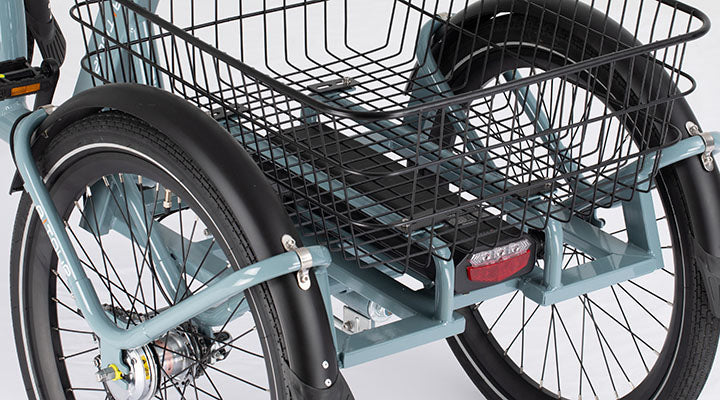Biking may be the most pleasurable form of exercise for seniors. There is no pressure on your legs when you are riding a bike since your pelvis is supporting all of your body weight. For elderly persons who battle joint discomfort or other ailments, biking is a more manageable type of exercise than walking. An example of aerobic activity is cycling. The cardiovascular system, blood vessels, and brain all benefit greatly from it. Aerobic exercise causes the release of endorphins, which have been found to reduce the symptoms of depression and enhance cognitive function in people with Alzheimer's disease who are still in the early stages of the disease.
The gluteus, quadriceps, soleus, and gastrocnemius muscles are used as you press the pedals down, and they all help to build your overall muscular mass. When going up and down stairs, certain muscle groups are also used. Your hamstrings, quadriceps, and flexors, are all worked as you raise your legs. You need a strong shoulder and arm muscles to hold on to the steer and handlebars, and your core muscles are in charge of keeping you balanced.
How to Choose the Best Adult Tricycle for You?
Everyone can benefit from physical activity, regardless of their degree of physical fitness. Cycling as a workout improves cardiovascular health while also increasing muscle mass, improving coordination, and reducing body fat. An adult who has issues with strength, balance, or mobility can benefit from cycling's health benefits thanks to the steadiness and convenience provided by an adult tricycle, which also lowers the risk of falling that comes with riding a regular bicycle with two wheels.
What precisely is an adult tricycle?
Adult tricycles, sometimes referred to as trike for adults, three-wheeled bikes, and adapted tricycles, are self-propelled cycles with three wheels that are a great choice for people who struggle with balance or coordination but can still pedal and brake like on a tricycle. Adult tricycles are also known as three-wheeled bikes, adult tricycles, and adaptable tricycles. They typically have three enormous wheels—one in the front and two in the back—and a seating position that resembles a chair.
Things to know When Purchasing a Three-Wheeled Bike for Seniors
Many elderly persons have problems keeping their balance, which makes them unpleasant when riding a traditional bicycle. Three-wheeled bicycles are a highly suggested alternative. Let's take a closer look at some of the factors to consider while buying a three-wheeled bicycle for an elderly person.
Number of gears
The terrain must be considered when choosing a trike. You should be able to get away with utilizing one gear if the terrain is largely level. If there are hills nearby or if the senior who will be riding the tricycle lack the muscle strength to pedal, choose a tricycle with more than one gear. Being able to reduce the amount of force needed to move ahead is a great choice to have because three-wheeled bikes are much heavier than conventional bicycles.
Saddle
Make sure the saddle has enough padding to support your bones properly. Look for saddles designed expressly to reduce pressure on the perineum, which is where the arteries and nerves supplying the lower body are situated. You risk experiencing tingling or numbness in your leg if you put too much pressure here. These pressure-relieving seats usually have a horseshoe-like shape.
Relationship Between Adjustability and Weight Capacity
Before you purchase a bike, make sure to research how much weight it can support. Generally speaking, tricycles with larger wheels can support more weight. Another quality to consider is one that permits adjustment. Adjust the seat and handlebar heights so that they are neither too high nor too low to make the most of your time spent pedaling.
Bicycle Tandems
A tricycle in the tandem form may be your best alternative if riding a bicycle by yourself is either risky or impractical. Tandem bicycles come in a huge variety of designs. There are three-wheeled variations that are both upright and recumbent. Another choice is a linear model, in which one rider travels ahead of the other while the other stays at the rear.
The benefits of riding a bike like this are numerous. Each cyclist is free to pedal at his or her own pace. The steering is done by one person only. Even accessible seating is available in some versions for those with disabilities. For their own safety, those who are blind, deaf, or hard of hearing have the choice of traveling with others. Using tandem bicycles might make biking simpler for those who need a carer to assist them.
Electric trikes
You can choose between pedaling and using the electric motor to move forward when riding an electric Aitour trike. If a hill is a little too steep for you to continue climbing it or if you are a little too exhausted to keep going, just flip and switch, and off you go! Electric three-wheeled bicycles are perfect for carrying groceries due to their ubiquitous cargo baskets. The lack of tipping is also due to the thicker build.
Reclining bicycles
The recumbent bicycle comes in two different styles. Any recumbent bike with two wheels in the back is known as a delta recumbent bike. Tadpole recumbent bikes are those that have two wheels mounted in the front position. Many individuals discover that riding one is more comfortable than riding a normal upright bike since the saddle is shaped more like a chair. Using it won't make it tough for you to stay balanced because of its low center of gravity.
Your present medical conditions can be impacted by the bicycle you choose. You will have less pain from spinal stenosis when using a recumbent bike because your spine is in a flexed position. However, a herniated disk can get worse if you ride a recumbent bike while suffering from it.













Leave a comment
All comments are moderated before being published.
This site is protected by hCaptcha and the hCaptcha Privacy Policy and Terms of Service apply.